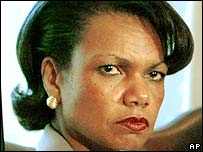Yes, please.
I was going to post this the other day, but I had to wait until after Monday, because the author really is perfectly serious about it. Alex Seiz-Wald, at Salon, has recently discovered the chatter in gun-enthusiast and gun-rights circles around the fear of back-door gun-control legislation — by means of restrictions or prohibitions on ammunition sales, if new controls on guns themselves prove not to be politically viable. And so he picks up on some anecdotal Data-less Trend Stories about panic buying
of ammunition in response. So, we get this story, from a putatively liberal political commentator:
With gun nuts hoarding bullets, will cops be disarmed?
Gun owners terrified of nonexistent plans to restrict ammo are hoarding bullets. Now police are running out.
. . . And there are plenty of members of Congress making hyperbolic claims about gun control, and a right-wing media eager to heighten and repeat the warnings. Not to mention the NRA, the most powerful voice on guns in the country and the market leader on paranoid gun rhetoric for decades.
But what those rushing to stockpile guns and ammo seem to miss is that their actions have consequences on the people whose job it is to keep us safe.
— Alex Seitz Wald, in Salon (27 March 2013) (emphasis added)
Now I have no really strong convictions about what those rushing to stockpile guns and ammo
think about or don’t think about. Maybe if you want to know that, rather than to speculate about the mind of the intra-cultural Other, you could ask some people who are doing that, instead of spending the entire article interviewing self-serving budget-hungry police chiefs. But I do know that many people would be much safer if police were unable to buy any bullets at all. Did police bullets keep Kimani Gray safe? Emma Hernandez? Angel Alvarez and Luis Soto? Alonzo Heyward? Sean Bell? Amadou Diallo? Who seriously believes that keep[ing] us safe
is what heavily-armed police do? Who is the us
that they have in mind when they think that?
In all seriousness, this is really nothing more than another Data-less Trend Story but if it were true, it would be the best thing I’d heard all year about NRA fans.
I don’t even own any guns, and don’t have any plans to get into them, but if the story is true that just makes me wish I had the money to run out and buy up boxes of ammunition right now. Because I have no use for it, but the cops do. And that’s precisely the problem with the cops.
Disarm your local police.
